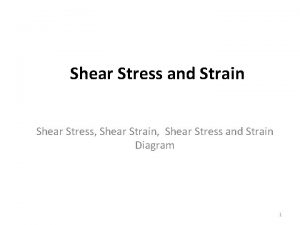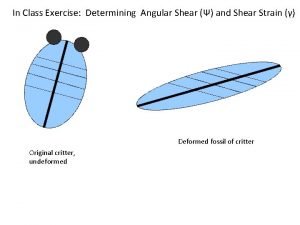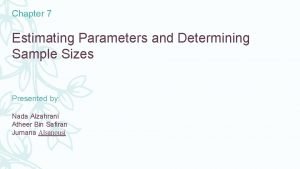In Class Exercise Determining Angular Shear and Shear





- Slides: 5

In Class Exercise: Determining Angular Shear (Ψ) and Shear Strain (γ) Deformed fossil of critter Original critter, undeformed


C. Line constructed perpendicular to A A Ψ B B Line that was perpendicular to A in the undeformed fossil Deformed fossil of critter

Line that was perpendicular to A in the undeformed fossil B B A Ψ C. Line constructed perpendicular to A

Steps for determining angular shear (Ψ) and shear strain (γ) (from student handout) (1) Identify perpendicular features in the original critter or other strain marker. In some cases, you might have to 'construct' a new line to make things easier (for example trilobites don't have one single line conveniently bisecting them). Normally you would know this up front based upon your knowledge of the organism’s symmetry, so you don't need an original, undeformed sample to do this analysis. (2) Identify the same lines/features in the deformed strain marker, which is what we will be working with in steps 3 -6. (3) Choose ONE of the two originally perpendicular lines (doesn't matter which); we'll call this line A. The one you DON'T use will be called B. Construct a line perpendicular to A. Your constructed line should originate where lines A and B cross to make life easy. Label this line ‘C’. (4) The angular shear (Ψ) along line A is the acute angle between lines B and C. You are comparing how much a line that was originally perpendicular had to rotate to get to the current position. Measure this angle using your protractor. (5) If the shift from the perpendicular (C) to line (B) is in the clockwise direction, the sign of your angular shear along line A is positive. If the shift is counterclockwise, angular shear is negative. Note: the sign will change depending on which line you pick as a reference, so it only matters that you have the right sign for the scenario that YOU have picked…but you must always specify or label which line is the reference line! (6) Determine the shear strain: γ = tanΨ








